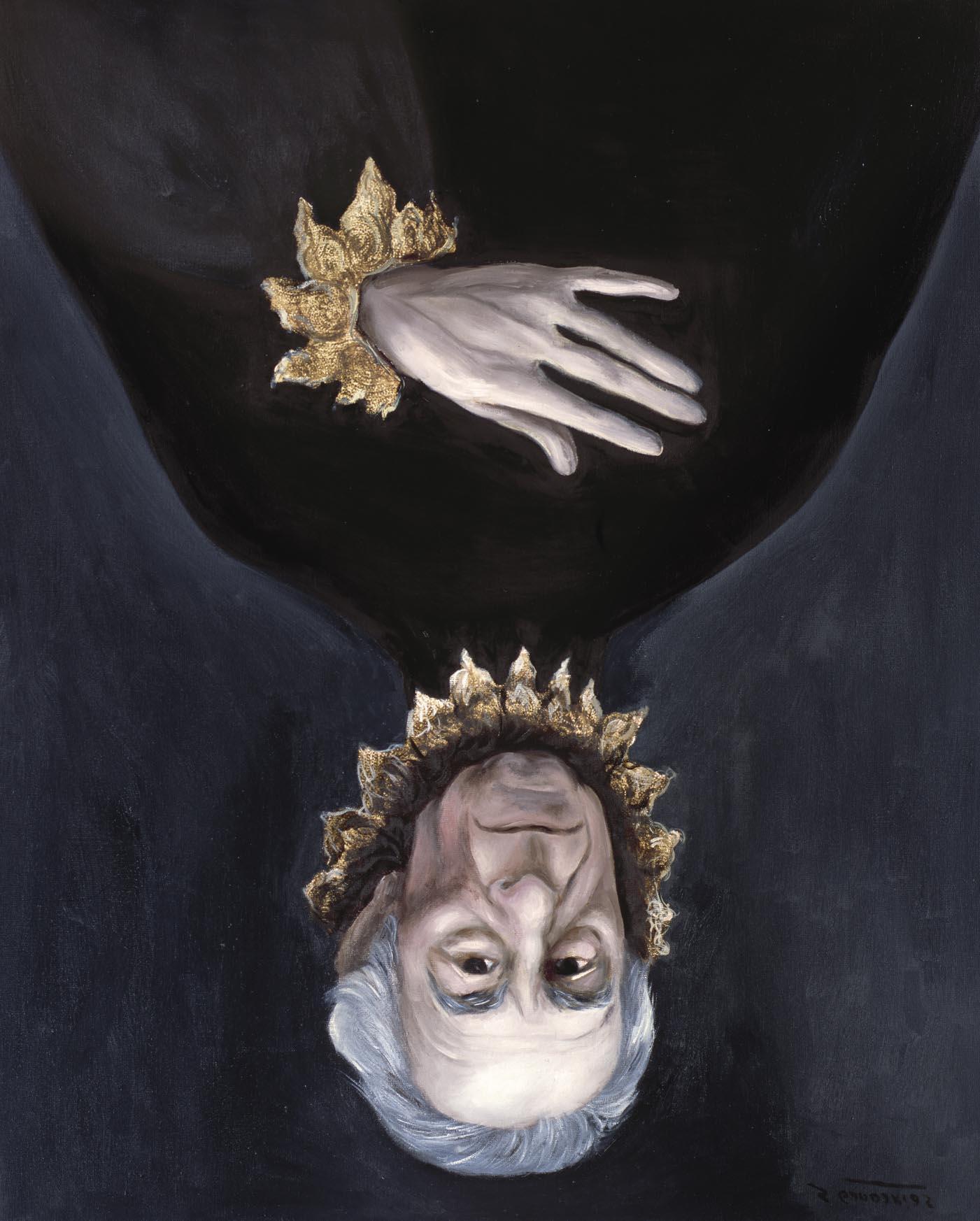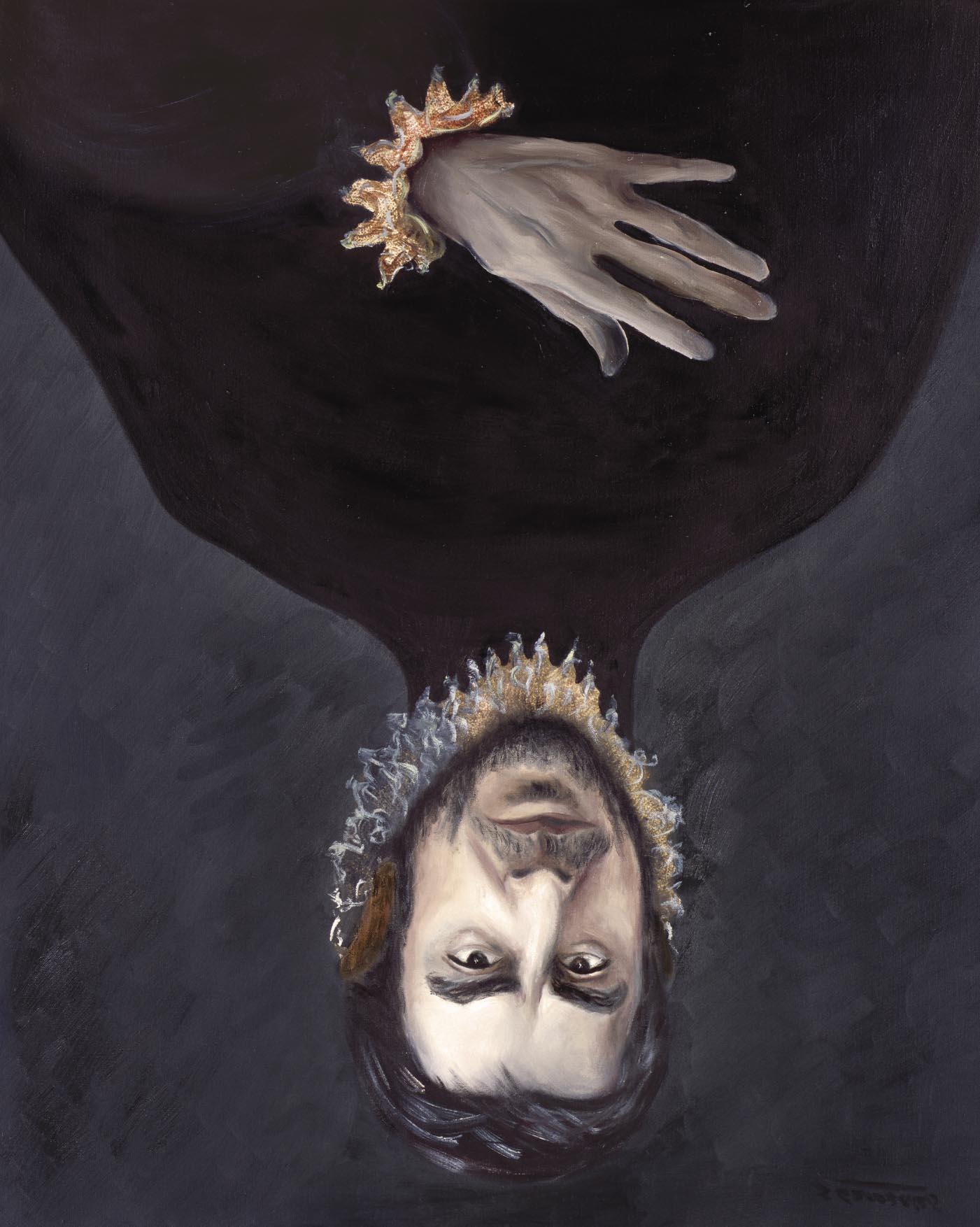Sofía Gandarias
37
José Saramago The face and the mirror or painting as memory
El rostro y el espejo. o la pintura como memoria
The painter stands before the mirror, neither in profile nor three-quarter view, in the position she normally selects when using herself as a model. The canvas is the mirror, and it is on the mirror the colors will be laid.With the precision of a cartographer, the painter sketches in the outlines of her image. As if dealing with a perimeter, a limit, she becomes the prisoner of herself.The hand that paints moves continually back and forth between the two faces, the real one and the reflection, but it has no place in the painting. The hand that does the painting cannot paint itself in the act of painting. It makes no difference whether the painter, in the mirror, begins with the mouth or the nose, the cheeks or forehead, bur she must absolutely avoid starting with the eyes, because they would cease to see. The mirror in this case must be moved. The painter will depict with precision that which she sees on that which she is seeing, bur with a precision that forces her to ask a thousand times during the work if that which she is seeing is already painted, or whether it is in fact her face reflected in the mirror. But she risks having to paint herself forever, unless, no longer being able to stand the bewilderment, the anguish, she decides to accept the challenge of endlessly painting the eyes on the eyes, thus, who knows, losing the awareness of her own face, transformed on a surface without color or form, requiring it to be painted yet again. From memory. Sofia Gandarias's works are these painted mirrors, from which her reconstructed, or perhaps even hidden, image has
El pintor está delante del espejo, no de soslayo o en tres cuartos, según se quiera designar la posición en que suele colocarse cuando decide elegirse a sí mismo como modelo. La tela es el espejo, sobre el espejo es donde van a ser extendidas las pinturas. El pintor diseña con rigor de cartógrafo el contorno de su imagen. Como si él fuera una frontera, un límite, se convierte en su propio prisionero. La mano que pinta se moverá continuamente entre dos rostros, el real y el reflejado, pero no tendrá lugar en la pintura. La mano que pinta no puede pintarse a sí misma en el acto de pintar. Es indiferente que el pintor comience a pintarse en el espejo por la boca o por la nariz, por la frente o por la barbilla, pero debe tener el cuidado supremo de no comenzar por los ojos porque entonces dejaría de ver. El espejo, en ese caso, mudaría de lugar. El pintor pintará con precisión lo que ve sobre aquello que ve, con tanta precisión que tendrá que preguntarse mil veces, durante el trabajo, si lo que está viendo es ya la pintura, o será nada más, y todavía, su imagen en el espejo. Correrá por tanto el riesgo de tener que seguir pintándose infinitamente, salvo si, por no poder soportar más la perplejidad, la angustia, decide correr el riesgo mayor de pintar por fin los ojos sobre los ojos, perdiendo así, quién sabe, el conocimiento de su propio rostro, transformado en un plano sin color ni forma que será necesario pintar otra vez. De memoria. Las telas de Sofía Candarías son estos espejos pintados, de donde se ha retirado, recompuesta, su imagen, o donde oculta aún se mantiene, tal vez
José Saramago was a Portuguese writer, widely recognized as one of the most important literary figures of our time. He received the Nobel Prize in Literature, and the Camões Prize and America Award, among many others.
José Saramago fue un escritor portugués, ampliamente reconocido como una de las grandes figuras literarias de nuestro tiempo. Recibió el Premio Nobel de Literatura, así como el Premio Camões y el America Award, entre otros muchos.
#7
El Caballero Tzvetan Todorov Óleo sobre lienzo / 100 x 81 cm. / 2013





























